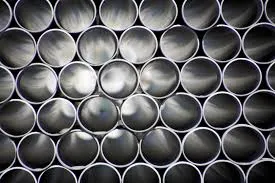
-
 Afrikaans
Afrikaans -
 Albanian
Albanian -
 Amharic
Amharic -
 Arabic
Arabic -
 Armenian
Armenian -
 Azerbaijani
Azerbaijani -
 Basque
Basque -
 Belarusian
Belarusian -
 Bengali
Bengali -
 Bosnian
Bosnian -
 Bulgarian
Bulgarian -
 Catalan
Catalan -
 Cebuano
Cebuano -
 China
China -
 China (Taiwan)
China (Taiwan) -
 Corsican
Corsican -
 Croatian
Croatian -
 Czech
Czech -
 Danish
Danish -
 Dutch
Dutch -
 English
English -
 Esperanto
Esperanto -
 Estonian
Estonian -
 Finnish
Finnish -
 French
French -
 Frisian
Frisian -
 Galician
Galician -
 Georgian
Georgian -
 German
German -
 Greek
Greek -
 Gujarati
Gujarati -
 Haitian Creole
Haitian Creole -
 hausa
hausa -
 hawaiian
hawaiian -
 Hebrew
Hebrew -
 Hindi
Hindi -
 Miao
Miao -
 Hungarian
Hungarian -
 Icelandic
Icelandic -
 igbo
igbo -
 Indonesian
Indonesian -
 irish
irish -
 Italian
Italian -
 Japanese
Japanese -
 Javanese
Javanese -
 Kannada
Kannada -
 kazakh
kazakh -
 Khmer
Khmer -
 Rwandese
Rwandese -
 Korean
Korean -
 Kurdish
Kurdish -
 Kyrgyz
Kyrgyz -
 Lao
Lao -
 Latin
Latin -
 Latvian
Latvian -
 Lithuanian
Lithuanian -
 Luxembourgish
Luxembourgish -
 Macedonian
Macedonian -
 Malgashi
Malgashi -
 Malay
Malay -
 Malayalam
Malayalam -
 Maltese
Maltese -
 Maori
Maori -
 Marathi
Marathi -
 Mongolian
Mongolian -
 Myanmar
Myanmar -
 Nepali
Nepali -
 Norwegian
Norwegian -
 Norwegian
Norwegian -
 Occitan
Occitan -
 Pashto
Pashto -
 Persian
Persian -
 Polish
Polish -
 Portuguese
Portuguese -
 Punjabi
Punjabi -
 Romanian
Romanian -
 Russian
Russian -
 Samoan
Samoan -
 Scottish Gaelic
Scottish Gaelic -
 Serbian
Serbian -
 Sesotho
Sesotho -
 Shona
Shona -
 Sindhi
Sindhi -
 Sinhala
Sinhala -
 Slovak
Slovak -
 Slovenian
Slovenian -
 Somali
Somali -
 Spanish
Spanish -
 Sundanese
Sundanese -
 Swahili
Swahili -
 Swedish
Swedish -
 Tagalog
Tagalog -
 Tajik
Tajik -
 Tamil
Tamil -
 Tatar
Tatar -
 Telugu
Telugu -
 Thai
Thai -
 Turkish
Turkish -
 Turkmen
Turkmen -
 Ukrainian
Ukrainian -
 Urdu
Urdu -
 Uighur
Uighur -
 Uzbek
Uzbek -
 Vietnamese
Vietnamese -
 Welsh
Welsh -
 Bantu
Bantu -
 Yiddish
Yiddish -
 Yoruba
Yoruba -
 Zulu
Zulu
Innovative Solutions for Efficient Water Storage and Management in GRP Tanks
Understanding GRP Water Tanks A Comprehensive Overview
GRP (Glass Reinforced Plastic) water tanks are becoming increasingly popular in both residential and commercial applications due to their durability, cost-effectiveness, and versatility. These tanks are constructed using a composite material made from a polymer matrix reinforced with glass fibers, which provides them with exceptional strength and resistance to corrosion. This article explores the features, benefits, and applications of GRP water tanks.
Understanding GRP Water Tanks A Comprehensive Overview
Another significant benefit is the lightweight nature of GRP tanks. Compared to their concrete or metal counterparts, GRP tanks are much lighter, making them easier to handle and transport. This characteristic simplifies installation processes, especially in locations where access is challenging. The reduced weight also allows for structural flexibility, as GRP tanks can be installed on various surfaces without the need for extensive reinforcement.
grp water tank

In terms of versatility, GRP water tanks come in various shapes and sizes, catering to different needs and space constraints. They can be manufactured as modular designs allowing for easy expansion, should water storage needs increase over time. Additionally, these tanks can be customized to fit specific requirements, such as different capacities or even insulation properties, ensuring they are suitable for a wide range of applications.
Moreover, GRP water tanks have excellent thermal insulation properties, which help to maintain the temperature of the stored water. This feature is particularly important for applications where water temperature needs to be controlled, such as in agricultural or industrial processes. The insulating capability also contributes to the prevention of algae growth and maintains water quality over extended periods.
GRP water tanks are widely used in various sectors, including residential, agricultural, industrial, and municipal applications. They are employed for storing potable water, firefighting water, irrigation, and wastewater processes. Their adaptability to different environments makes them an essential component in modern water management systems.
In conclusion, GRP water tanks offer a robust, lightweight, and versatile solution for water storage needs. With their long lifespan, minimal maintenance requirements, and excellent thermal insulation properties, they represent a significant advancement over traditional water storage options. As the demand for effective water management solutions continues to grow, GRP water tanks will undoubtedly play a crucial role in shaping the future of water storage in both urban and rural settings.
Latest news
-
Exploring the Benefits of Top Hammer Drifter Rods for Enhanced Drilling PerformanceNewsJun.10,2025
-
High-Precision Fiberglass Winding Machine for GRP/FRP Pipe Production – Reliable & Efficient SolutionsNewsJun.10,2025
-
FRP Pipes & Fittings for Shipbuilding - Corrosion-Resistant & LightweightNewsJun.09,2025
-
Premium FRP Flooring Solutions Durable & Slip-ResistantNewsJun.09,2025
-
Premium Fiberglass Rectangular Tanks Durable & Lightweight SolutionNewsJun.09,2025
-
Tapered Drill String Design Guide Durable Performance & UsesNewsJun.09,2025









